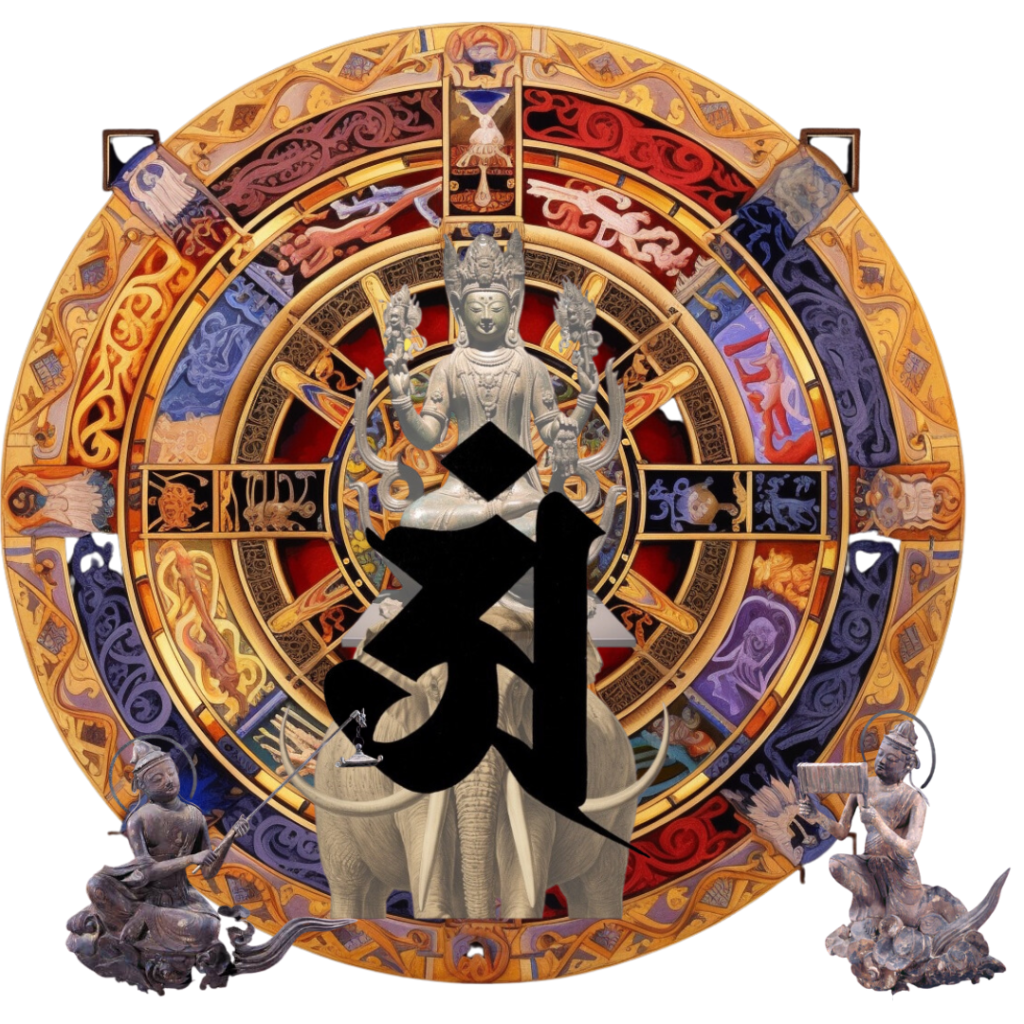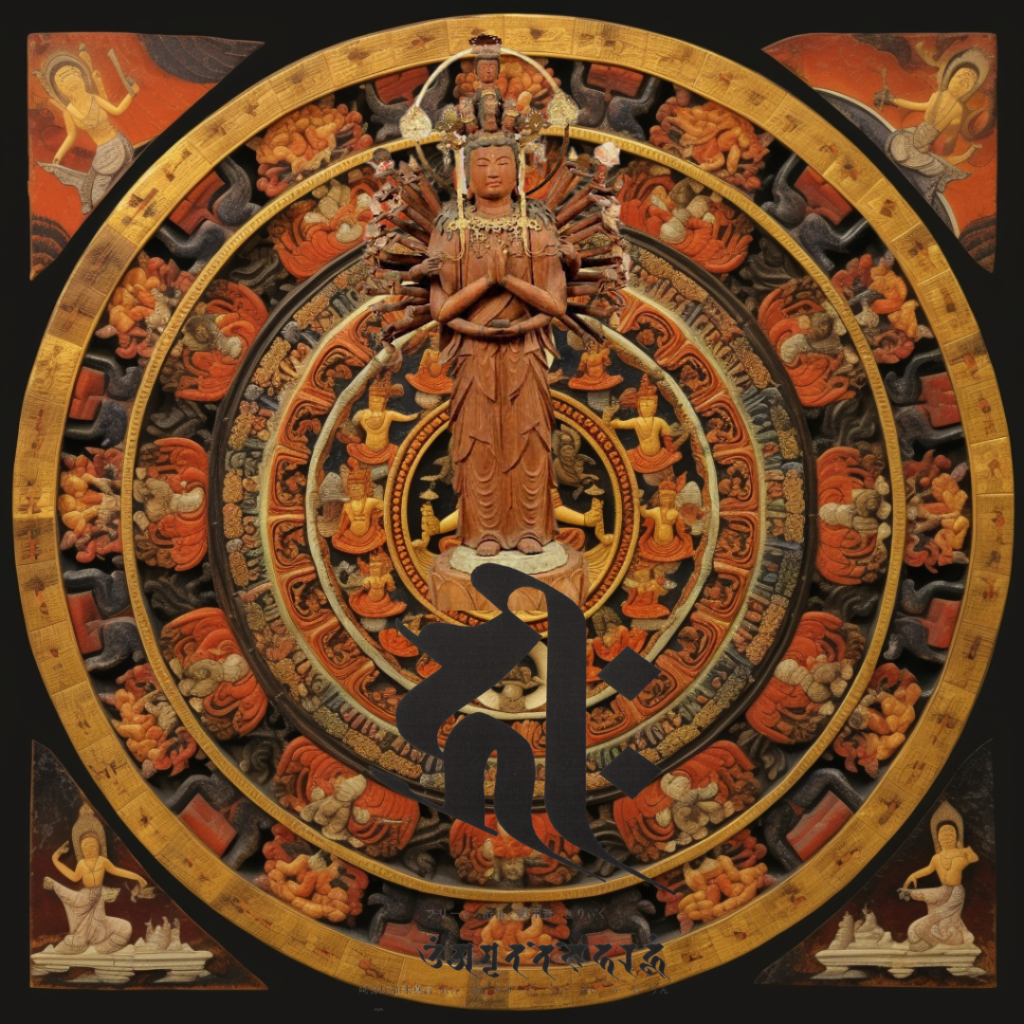一般社団法人良いお寺研究会の調べでは、仏教界全体(寺院数約7万7000カ寺)の総収入は、コロナ禍前は約5700億だったが、2020年は約2700億に減った。ジャーナリストで僧侶の鵜飼秀徳氏は「3密回避のため法事は減り、葬儀も簡略化されるケースが劇的に増えた。コロナ禍が長引けば、経済的に困窮し消滅する寺院が増える。その影響は国民にも及ぶ」という――。

コロナ禍でさらに経済的に困窮する寺院が増えていくのは必至
コロナ感染症の拡大が、お寺の世界にどれほどの影響を与えているのか。仮にコロナの流行が今後も続くならば今後、仏教界はどうなっていくのか――。
私が代表理事を務める一般社団法人良いお寺研究会(東京都品川区)はこの度、「コロナ感染症流行による寺院収入への影響と未来予測」を調査・分析した。
調査の結果、寺院収入総額がこのコロナ禍によって、およそ半分近く減少している可能性があることがわかった。コロナ禍が長引けば、さらに経済的に困窮する寺院が増えていくとみられる。コロナ禍が「寺院消滅」を、より加速化させる可能性がある。
良いお寺研究会では、これまで社会変動が寺院運営に及ぼす影響を調査してきている。このたび、仏教界全体の市場規模を割り出し、コロナ禍による寺院収入への影響を複合的に分析した。
それによると現在、仏教界全体(寺院数約7万7000カ寺)の総収入(市場規模)は、コロナ禍前の水準で総計約5700億円(非収益事業と収益事業の合計)とみられる。大手教団(宗派)が実施している寺院調査(宗勢調査)を基にして算出した。2005年では約4000億円規模の水準だった。寺院を取り巻く経済は近年、急激に成長してきていたことがわかった。
仏教界の総収入は約5700億円が→2700億円に急減
ところが、同会の調べでは、2020年では約2700億円(前年比約47%)もの減少となっている可能性がある。それを裏付ける別の調査もある。
一例を挙げれば、公益財団法人全日本仏教会は、昨年8月に大和証券と共同調査した「新型コロナウイルス感染症が仏教寺院に与える影響」(6192サンプル)を発表。例えば、年間を通して多くの布施が見込める「お盆の布施金額の総額」は、例年に比べて46.7%まで落ち込んだと報告している。なお、もっとも落ち込みが大きかったのは、コロナ感染症が拡大した関東地区(32.7%)だった。
また、各宗派のコロナ影響調査でも、軒並み寺院収入の落ち込みが明らかになっている。曹洞宗が昨年6月に発表した「コロナ影響調査」では79%の寺院が、浄土宗の同様の調査では84%が前年同期間と比べた寺院収入が「減少した」と回答している。
こうした各種調査などをふまえ、2020年と同等のコロナ感染症の拡大が今後も続くならば、法事や仏教行事などの開催が危ぶまれ、さらに寺院収入が減少していく可能性がある。
「多死社会」で収入右肩上がりがコロナで暗転
ここで、寺院の収入構造について少し説明しよう。
正確な寺院収入を調べるすべは存在しないが、良いお寺研究会が宗勢調査の寺院収入項目を分析した結果、大手教団の1カ寺あたりの平均的収入は、浄土宗寺院が800万円、曹洞宗が700万円、浄土真宗本願寺派が720万円程度とみられる。この収入が、半分の水準まで減少しているのだから、昨年は多くの寺院が赤字決算になっていると考えられる。
こうした状況に対し、浄土宗などでは寺院の等級(経済状況などに応じた寺院の格付け)に応じた、宗独自の助成金給付に踏み切っている。
コロナの流行は経済的には比較的安定的に成長してきた仏教界にとって、突如の暗転となった。
墓じまいの増加や、死生観の変化などで個々の寺院を取り巻く状況の厳しさは指摘されているものの、それはあくまでも限定的で、マクロでは仏教界にはむしろ追い風が吹いていた。むろん寺院格差は拡大しており、弱体化した寺院はどんどん消滅している側面は否めない。
追い風が吹いている背景には、多死社会がある。厚生労働省「人口動態統計」によれば、2007年以降、死亡数が出生数を上回る状態が続いている。2005年の死者数はおよそ108万人だった。これが10年後の2015年には130万人になっている。
2020年はコロナ感染症対策の影響で、インフルエンザやコロナ以外の肺炎死、交通事故死などが減ったことで死亡数が減り、前年比9373人減(0.7%)の約138万4544人となっていたが、日本は中長期的な傾向として多死社会化の局面に突入している。2030年には160万人の死者数に上り、その後も数十年間にわたって死者優位の時代が続くとみられる。
死者が増えれば、弔いの機会が増える。地域の寺の多くは檀家組織を抱えており、檀家が死亡すれば葬儀を菩提寺に任せることになる。また、葬儀の後は初七日や四十九日、百箇日、一周忌、三回忌、七回忌……そして三十三回忌や五十回忌あたりまで、定期的に法事を実施するのが日本人の慣習になっている。一部に、田舎の墓から都会の永代供養へと移す改葬もみられるが、今のところ限定的である。
葬儀や法事が、一般的な日本の寺院のメイン収入となる。
なかには、「お寺は拝観料や、お守りや御朱印などの収入が多いのでは」と、疑問に思う人がいるかもしれない。だが、拝観料に頼っている寺院は京都や鎌倉などにある、ごく一部の寺院に限られる。寺院が収入のうち、葬儀や法事の宗教儀式が8割以上を占めているといわれている。

では、寺院は年間どれくらいの葬儀や法事を実施しているものなのか。年間葬儀回数は一般的に檀家軒数の6%ほどだ。法事(回忌法要)の実施数は檀家数の3割ほどである。
つまり、100軒の檀家を抱える寺院が1年間に執り行う葬儀はだいたい6件前後。法事の数は30回ほどとなる。住職がサラリーマンなどの副業をもたない専業型寺院の場合、檀家数が少なければ、他の有力寺院に法事の手伝いをするなどして生計を立てるしかない。
寺を切り盛りできず、食っていけない僧侶を国は見殺しにするのか
では、各寺院がどれだけの檀家数を抱えているかといえば、情報開示していないので、なんともいえない。
だが、例えば、浄土宗(寺院数約7000カ寺)が実施した宗勢調査(2017年)では、全体の18.4%が51〜100戸の範囲に収まっている。寺院専業で生計を立てていける(家族を養える)目安である檀家数(300軒以上ともいわれる)の割合は、12.2%にとどまっている。年収面でみれば300万円未満の低収入寺院が39.6%、300万円以上500万円未満の収入の寺院が14.3%、500万円以上1000万円未満が22.8%、1000万円以上が23.3%となっている。どの宗派も概して同じような分布傾向とみてよい。
つまり、布施収入だけで生計を立てられない寺が多数派なのだ。

撮影=鵜飼秀徳
そこへ、コロナパンデミックが仏教界を直撃した。昨年来、「3密」状態になりかねない法事は減り、葬儀も「家族葬」や「1日葬」、あるいは火葬のみの「直葬」になるケースが劇的に増えた。さらに花まつりやお彼岸、お盆などの年中仏教行事も、多くの寺院が規模縮小や自粛に追い込まれている。
もっといえば、企業や学校法人や社会福祉法人、NPO法人などに対して実施された国の経済的支援策である「持続化給付金(上限200万円)」も宗教法人は対象にならなかった。その理由は、政府が宗教団体に公金を入れれば、国民から政教分離の原則に反する可能性がある、としているからだ。
当然のことながら、緊急事態宣言に伴って経済的影響を受けた飲食店や関連事業者に対する一時金なども宗教法人は適用になっていない。

According to a survey by the General Incorporated Association Good Temple Study Group, the total income of the entire Buddhist world (about 77,000 temples) was about 570 billion before the Corona disaster, but decreased to about 270 billion in 2020. Hidenori Ukai, a journalist and monk, said, "Three The number of legal affairs has decreased and funerals have been simplified dramatically due to the avoidance of three. The impact will extend to the people. "
It is inevitable that the number of temples that are in financial distress due to the corona disaster will increase.
How much impact is the spread of corona infections on the world of temples? If the corona epidemic continues, what will happen to the Buddhist world in the future?
The General Incorporated Association Good Temple Study Group (Shinagawa-ku, Tokyo), of which I am the representative director, has recently investigated and analyzed "the impact of the corona infection epidemic on temple income and future predictions."
The survey found that the total temple income could have been reduced by nearly half due to the corona epidemic. If the corona wreck is prolonged, the number of temples that are in financial distress is expected to increase. Corona wreckage may accelerate the "disappearance of temples".
The Good Temple Study Group has been investigating the impact of social change on temple management. This time, we have determined the market size of the entire Buddhist world and analyzed the impact of the corona virus on temple income in a complex manner.
According to the report, the total income (market size) of the entire Buddhist world (about 77,000 temples) is estimated to be about 570 billion yen (total of non-profitable businesses and profitable businesses) at the level before the Corona disaster. Calculated based on a temple survey (sectarian survey) conducted by a major sect (sect). In 2005, it was about 400 billion yen. It turns out that the economy surrounding the temple has grown rapidly in recent years.
The total income of the Buddhist world dropped sharply from about 570 billion yen to 270 billion yen.
However, according to a survey by the association, there is a possibility that it will decrease by about 270 billion yen (about 47% from the previous year) in 2020. There is another study to support that.
For example, the All Japan Buddhist Church announced in August last year a joint survey with Daiwa Securities "Effects of Coronavirus Infection on Buddhist Temples" (6192 samples). For example, it is reported that the "total amount of Obon festival", which is expected to be applied throughout the year, has dropped to 46.7% compared to the average year. The largest decline was in the Kanto area (32.7%), where corona infection spread.
In addition, a survey of the influence of coronas of each sect also revealed a decline in temple income across the board. In the "Corona Impact Survey" released by the Soto sect in June last year, 79% of temples and 84% in a similar survey of the Jodo sect said that temple income "decreased" compared to the same period of the previous year.
Based on these various surveys, if the spread of coronavirus infections equivalent to that in 2020 continues, there is a risk that the holding of legal affairs and Buddhist events will be threatened, and temple income may further decrease.
Income rises in "multi-death society" and goes dark in corona
Here, let me explain a little about the income structure of the temple.
There is no way to find out the exact temple income, but as a result of a good temple study group analyzing the temple income items of the sectarian survey, the average income per temple of a major sect is 8 million yen for the Jodo sect temple and the Soto sect. It is estimated to be about 7 million yen and the Jodo Shinshu Honganji school is about 7.2 million yen. Since this income has fallen to half, it is believed that many temples were in the red last year.
In response to this situation, the Jodo sect and others have decided to provide subsidies unique to the sect according to the grade of the temple (the rating of the temple according to the economic situation).
The corona epidemic suddenly turned into a blackout for the Buddhist world, which has grown relatively economically.
Although it has been pointed out that the situation surrounding individual temples is severe due to the increase in graves and changes in the view of life and death, it is limited to the last, and in the macro, the Buddhist world was rather a tailwind. Of course, the disparity in temples is widening, and it is undeniable that weakened temples are disappearing steadily.
Behind the tailwind is a multi-death society. According to the Ministry of Health, Labor and Welfare's "Vital Statistics," the number of deaths has continued to exceed the number of births since 2007. The death toll in 2005 was approximately 1.08 million. Ten years later, in 2015, there were 1.3 million people.
In 2020, due to the effects of measures against corona infections, the number of deaths decreased due to the decrease in deaths from influenza and non-corona pneumonia and deaths from traffic accidents, resulting in a decrease of 9,373 (0.7%) from the previous year to about 1,384,544. However, Japan has entered a phase of multi-death society as a medium- to long-term trend. The death toll will reach 1.6 million in 2030, and it is expected that the era of death dominance will continue for decades.
The more dead, the more chances of mourning. Many of the temples in the area have a Dan family organization, and if the Dan family dies, the funeral will be entrusted to Bodaiji. In addition, after the funeral, the Japanese regularly carry out legal affairs on the first seven days, forty-nine days, one hundred days, one round, three times, seven times, and so on, up to the thirty-third and fifty days. It has become a custom. There are some reburials that move from rural tombs to permanent urban memorial services, but for now it is limited.
Funerals and ceremonies are the main source of income for general Japanese temples.
Some may wonder, "Temple has a lot of income such as admission fees, amulets, and red stamps." However, the temples that rely on admission fees are limited to a small number of temples in Kyoto and Kamakura. It is said that funerals and religious ceremonies of ceremonies account for more than 80% of the income of temples.
So how many funerals and rituals do temples carry out each year? The number of funerals per year is generally about 6% of the number of Danya. The number of memorial services (recollection memorial services) is about 30% of the number of Danish families.
In other words, about 6 funerals are held in a year by a temple with 100 Danya. The number of legal affairs will be about 30 times. In the case of a full-time temple where the chief priest does not have a side job such as a salaryman, if the number of dans is small, there is no choice but to make a living by helping other influential temples with legal affairs.
Will the country kill the monks who can't cut the temple and eat it?
Then, it cannot be said how many temples each temple has because it does not disclose information.
However, for example, according to a sectarian survey (2017) conducted by the Jodo sect (about 7,000 temples), 18.4% of the total is in the range of 51 to 100 households. The percentage of Danish households (also known as more than 300), which is a guideline for earning a living (supporting a family) by working exclusively at a temple, is only 12.2%. In terms of annual income, 39.6% of temples have low income of less than 3 million yen, 14.3% of temples have income of 3 million yen or more and less than 5 million yen, 22.8% of temples have income of 5 million yen or more and less than 10 million yen, and 10 million yen or more. It is 23.3%. All denominations can be regarded as having a similar distribution tendency in general.
In other words, there are a large number of temples that cannot make a living from Fuse income alone.
Shooting = Hidenori Ukai
There, the corona pandemic hit the Buddhist world directly. Since last year, the number of legal affairs that could lead to a "three-cs" state has decreased, and the number of cases where funerals are "family funerals", "one-day funerals", or "direct cremations" with only cremation has increased dramatically. In addition, many temples are being forced to reduce their scale or refrain from doing Buddhist events throughout the year, such as the Flower Festival, the equinoctial week, and the Obon festival.
Furthermore, the "sustainable benefit (up to 2 million yen)", which is a national financial support measure implemented for companies, school corporations, social welfare corporations, NPO corporations, etc., does not cover religious corporations. It was. The reason is that if the government puts public money into religious groups, it could violate the principle of separation of church and state from the people.
As a matter of course, religious corporations do not apply to lump-sum payments for restaurants and related businesses that have been economically affected by the state of emergency.






